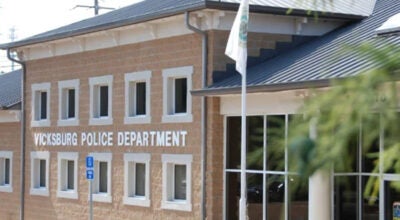ERDC’s first director proud of labs’ accomplishments over 25 years
Published 4:31 pm Friday, September 22, 2023
Twenty-five years ago, Dr. James Houston, then-director of the Coastal and Hydraulics Laboratory at the then-U.S. Army Corps of Engineers Waterways Experiment Station on Halls Ferry Road, was named director of the Engineer Research and Development Center, a new organization that consolidated the Army’s research labs under one umbrella to meet its changing technical needs.
On Thursday, Houston returned to ERDC for the center’s 25th anniversary to tour the campus and participate in a panel discussion of its history. Looking back on his tenure as director, Houston said he envisioned the eventual growth research and development complex that grew out of Waterways.
“If you just track ERDC when it was WES and you kept tracking how much money it brings in, how many people; the job it was doing, it always grew no matter what,” Houston said. “Even though there were times — sometimes there was war, sometimes there was peace. Sometimes we had big civil works projects, sometimes we didn’t, but we always increased because ERDC does a sensational job for its customers.”
Houston, who was involved in the design of the present ERDC headquarters building, said he recommended the Army consider relocating buildings to a centralized area.
“You know, we’re spread all over the place; it made no sense,” he said. “I always knew we were going grow this large because ERDC has just sensational, excellent work.”
But assembling the labs and administration that would be ERDC, Houston said, was tough near the beginning.
“It was pretty tough. I did not want the job,” he said. “I turned it down multiple times.”
Putting together the pieces that would be ERDC, he said, was difficult because some of the labs didn’t want to unite and have to report to someone in Vicksburg.
“But I think what turned the tables really was 9/11,” Houston said. “9/11 hit and then they had a global war on terrorism; the war on Iraq and Afghanistan. Everyone pulled together because troops were dying and it was ERDC that had expertise in protecting soldiers against rockets and mortars and IEDs.
“We started working among ourselves; the labs at the different locations, and with the other Army labs and Navy lab and Air Force lab because there was a compelling reason to all work together,” he added. “What united the ERDC, all the labs, I think was the aftermath of 9/11 and the need to protect troops and so forth.”
Looking back on his reluctance to take the position of director, Houston said initial plans indicated the ERDC director would be in Washington, D.C., not Vicksburg, “and frankly, my wife and I didn’t want to move to Washington, D.C., and I wasn’t that interested in becoming director anyway, and so I did not apply for the position — it was advertised twice up there.”
When the Corps’ Chief of Engineers asked Houston why he didn’t apply, “I told them I was the wrong person for the job because three-quarters of the work in ERDC is military doing, helping troops and soldiers. I was director of the Coastal Hydraulics Lab, which is a Civil Works laboratory.
“I told him I didn’t have a background in what’s three-quarters of ERDC; he should get somebody that had a lot of background on the military side,” Houston added.
When ERDC’s headquarters were moved to Vicksburg, Houston said, he considered applying, “But I enjoyed so much working in the Coastal Hydraulics Lab. You know, I knew everyone by their first names and everything. I decided not to apply for it here.”
The Chief of Engineers, Houston said, changed his mind.
“He basically told me I had to take the position,” Houston said. “So I took the position because he told me I had to, or I could retire.”
Looking back on his hesitation to take the position, Houston said, “I was really stupid because I was wrong; it became the most consequential job by far I’ve ever had because, in my 10 years, we had 9/11, we had wars, we had the global war on terrorism. We did remarkable things.”
During his last five years as director, he said, ERDC won Army Research Laboratory of the Year for four out of five years “because this was the best, the best of all; I was proud to be in charge of that and do all the things we accomplished. We saved a lot of lives.”
Looking at ERDC’s accomplishments during his term as director, Houston said ERDC’s biggest accomplishment was the work it did to protect soldiers from rockets, bombs, rocket-propelled grenades and improvised explosive devices, or IEDs.
“When the war first started, all the troops being killed by IEDs and then after a while you didn’t hear about it much anymore,” he said. “ERDC was a lot involved in that, along with other laboratories.
“So it was really saving lives,” he added. “I mean, I enjoyed the work we did on the environmental side and it was civil works, but saving a soldier’s life is a whole different item and we did a great job.”
And he’s never really left ERDC.
“I’m still an emeritus,” he said. “I had an office here. We work, we live here half the time and half the time in Florida by our daughter; I come back and forth.”
Houston and his wife built a home in Florida two years ago, he said, and he is still doing his work with ERDC by computer.
“I still do work with the ERDC as an emeritus. It’s a special program so I still am involved in ERDC, do work and enjoy it, enjoy contributing and enjoy hearing about all the things it’s doing because it keeps doing more than I would’ve ever thought because we’ve got so many new kinds of things,” he said.








